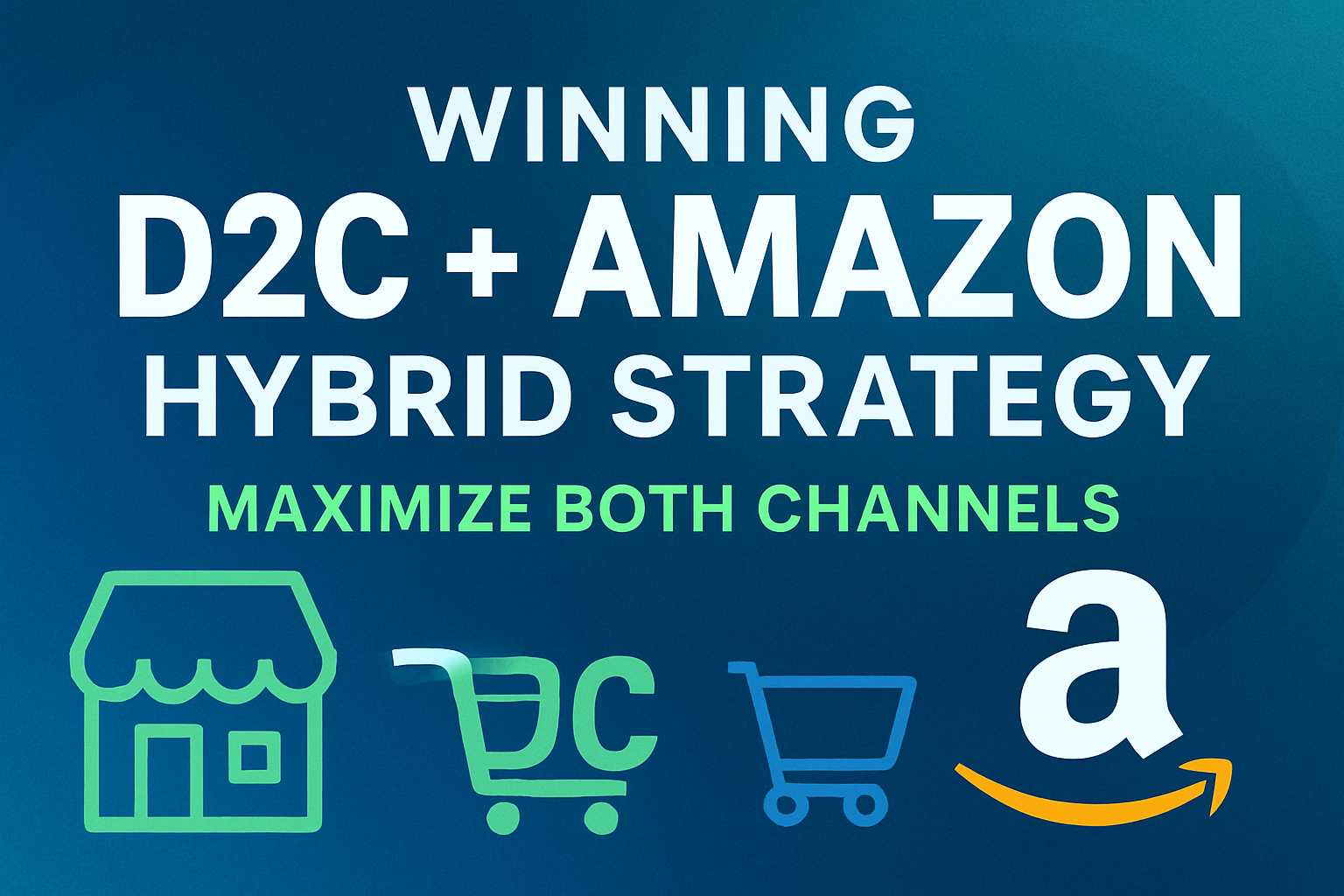
Introduction:
Many brands today sell both on Amazon and through their own Direct-to-Consumer (D2C) websites. But instead of working together, these two channels often compete. In this blog, we’ll break down how to create a hybrid growth strategy that helps both your Amazon and D2C sales grow in sync – not at the expense of each other.
The Benefits of a Hybrid Amazon + D2C Model
Selling on both platforms allows you to:
-
Reach massive Amazon traffic while owning the customer data on your D2C.
-
Use D2C for retention and Amazon for acquisition.
-
Reduce dependency on a single sales channel.
But to succeed, you need a unified approach to pricing, messaging, advertising, and fulfilment.
Step 1: Define the Role of Each Channel
| Platform | Strength | Focus Area |
|---|---|---|
| Amazon | High purchase intent | Product discovery + acquisition |
| D2C Website | Full brand control | Retention + customer experience |
Pro Tip: Don’t treat both channels the same. Use Amazon to win trust fast and your website to build long-term loyalty.
Step 2: Align Branding Across Channels
Consistency is key. Your packaging, product pages, and tone should feel like part of the same brand family.
-
Use the same logos, fonts, and colours.
-
Sync product images and value propositions.
-
Match storytelling and product benefits on both platforms.
This builds customer confidence and recognition.
Step 3: Use Amazon Ads to Fuel D2C Sales (Without Violating TOS)
While you can’t directly drive Amazon ads to your website, you can still:
-
Use Meta ads and Google Shopping to retarget people who clicked on Amazon listings.
-
Build custom audiences from your Amazon customers (post-purchase inserts).
-
Track branded search growth on Google and use it for your own SEO.
Tools like PixelMe and Northbeam help you attribute traffic across platforms.
Step 4: Sync Offers & Promotions (Strategically)
Don’t offer exactly the same thing everywhere. Use pricing and bundling to differentiate:
| Platform | Offer Type | Example |
|---|---|---|
| Amazon | Bestsellers in simple SKUs | 1-pack, 2-pack options |
| D2C Website | Premium or bundles | Subscription kits, gift sets |
This allows price flexibility without creating customer confusion.
Step 5: Unify Fulfillment & Inventory Management
To avoid overselling or running out of stock:
-
Use an OMS (Order Management System) like ShipBob, EasyEcom, or Zoho.
-
Sync inventory between Amazon FBA and your D2C warehouse.
-
Consider MFC (Multi-channel Fulfilment) with Amazon if you’re not using a 3PL.
Step 6: Retarget Amazon Customers Through D2C
You can’t email Amazon buyers directly – but you can:
-
Use product inserts to guide them to your website (with a QR code or offer).
-
Offer a warranty registration, free ebook, or discount code on your D2C store.
-
Launch a loyalty or rewards programme via your website.
This builds your customer database over time.
Step 7: Analyze Performance by Channel
Use KPIs tailored to each platform:
| Metric | Amazon | D2C |
|---|---|---|
| Conversion Rate | High (due to intent) | Lower (needs nurturing) |
| AOV | Moderate | High (with bundles) |
| LTV | Unknown | Trackable |
| Retargeting | Limited | Highly customizable |
Syncing these insights helps you allocate ad budget better and refine cross-channel messaging.
Bonus: Funnel Example for Amazon → D2C Flow
1. Discover on Amazon →
Run Sponsored Product/Brand ads → Customer buys
2. Get insert in packaging →
QR code for bonus content/warranty on your website
3. Nurture via email/SMS →
Send product education, upsell emails, offer bundles
4. Build loyalty →
Exclusive discounts, subscription model, reviews request
Tools to Enable This Strategy
-
eCommerce Campaign Builder – Optimize ads by SKU/channel
-
Klaviyo / Mailchimp – D2C email flows
-
ReCart / Tidio – Website retargeting and chat
-
Shopify + Amazon App – Sync sales & listings
Conclusion:
A successful hybrid Amazon + D2C strategy requires clear role definitions, coordinated branding, and smart customer redirection. Instead of choosing one, smart brands build a system where both channels feed each other.
Ready to optimise your Amazon-D2C hybrid growth? Use eCommercean’s automation tools to drive traffic, analyse data, and scale smarter.
